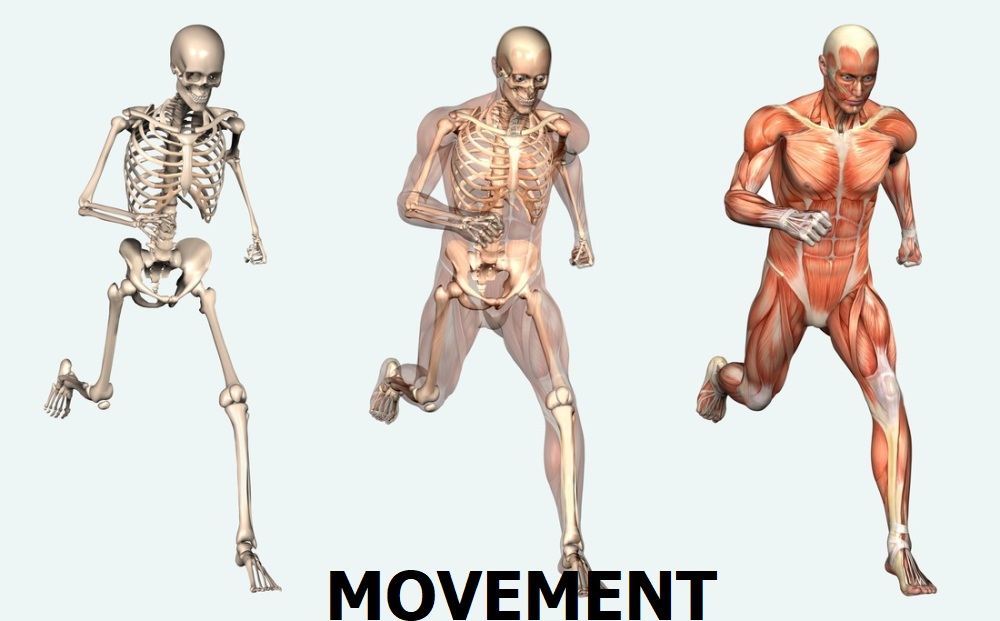TOPIC 5: HUMAN IMMUNO DEFICIENCY (HIV), ACQUIRED IMMUNO DEFICIENCY SYNDROME (AIDS), AND SEXUAL TRANSMITTED INFECTIONS (STI’s) | BIOLOGY FORM 4
HIV stands for Human Immunodeficiency Virus
Human Immunodeficiency Syndrome (HIV)
Is a retrovirus that causes the immune system to lose its efficiency, thus causing AIDS.
– HIV infects human cell and use the energy and nutrients of those cell to grow and reproduce.
NB: A person who has been infected with HIV is said to be HIV positive
– HIV enters the human body and increases chance of getting AIDS. This is because the virus destroys and kills a specific type of white blood cells called T – helper cells.
– The T – helper cells have CD4 protein on their surface which plays an important role in maintaining the body immune system.
– CD4 T – cells are considered “helper” cells because they do not neutralize infections but rather trigger the body body’s response to infections.
FUNCTION OF T – HELPER CELLS
They provide help to other cells in immune response by reorganizing foreign antigens.
NB:
i. The depletion of T – helper cells leads to low CD4 cell count. Normally CD4 count gives an indication of the strength of the immune system and its capability to produce natural defense against infections.
ii. Progressive loss of the CD4 T – cells weakens the body immune system.
iii. The overall effect of this is that the body becomes vulnerable to opportunistic infections such as tuberculosis, gonorrhoea and syphilis.
THE CD4 COUNT
Is a test that determines the strength of the person’s immune system.
It is advisable that all people with HIV infection should start taking antiretroviral treatment (ART) regardless of the status of their CD4 count,
The CD4 count tends to increase as a result of effective antiretroviral drugs (ARVs) administration. This is because ARVs prevent HIV from multiplying and destroying CD4.
People living with HIV develop AIDS when the number of CD4 cells in the immune system becomes too low, usually below 200 cells per 1mm3 of blood. CD4 count for a healthy person ranges between 500 – 1200 cells per 1mm3 of blood.
AIDS – stands for Acquired Immunodefiency Syndrome. Acquired Immunodefiency Syndrome (AIDS)
Is a condition resulting from infection by a virus called HIV.
AIDS is a late stage of HIV infection in which the immune system weakens and become unable to fight against opportunistic infections.
The virus weakens and destroys white blood cells called T – helper cells that help the body to fight against infections.
Therefore: once the T – helper cells become destroyed by HIV their number tend to decrease in the body causing the immune system to be weak.
OPPORTUNISTIC INFECTIONS
Are infections that occurs when the body immune system of an individual is weakened.
Example of opportunistic infections are:
i. Tuberculosis (TB)
ii. Severe diarrhoea
iii. Skin cancer
iv. Skin rashes
v. Coughing
vi. Pneumonia
vii. Fever
STIs – Stands for Sexually Transmitted Infections
Sexually Transmitted Infections (STIs)
Are infections that are transmitted from an infected person to another person who is not infected mainly through sexual intercourse.
Example of STIs are:
i. Syphilis
ii. Gonorrhoea
iii. genital herpes
iv. Chlamydia
STIs can also be transmitted by sharing personal items such as towels, underwear and swimsuits.
Some STIs such as gonorrhoea and syphilis can also be transmitted from mother to child during pregnancy or delivery. These infections are mainly caused by pathogens such as fungi, bacteria, viruses and protozoans
DIFFERENCES BETWEEN HIV/ADS AND STIs
The following are major differences between HIV/AIDS and STIs
| HIV/AIDS INFECTIONS | STIs INFECTIONS |
| (i) They are incurable | They are curable |
| (ii) There is no vaccine for HIV infection | Some STIs such as Hepatitis B have vaccine |
Similarities between HIV/AIDS and STIs
1. Both can be transmitted through sexual intercourse, sharing sharp objects or blood transfusion.
2. Both can be prevented by abstaining from sexual intercourse, avoiding sharing sharp objects, screening blood for transfusion.
RELATIONSHIP BETWEEN HIV AND STIs
1. PLWHA are more vulnerable to other infections including STIs such as syphilis, gonorrhoea and chlamydia. Likewise, STIs increase a person’s risks of getting HIV infection.
2. In addition, risk behaviours and practices that can lead to both HIV infection and other STIs are the same.
3. Some STIs such as syphilis can cause open wounds or ulcers in the genital area. These wounds, provide HIV a direct route into the bloodstream.
5. STIs can cause an increase in the concentration of CD4 T – helper cells in the genital area. The increased concentration of these cells provide HIV with a favourable target for infection.
Two reasons to why someone with STIs can get AIDS
i. STIs suppress immunity.
ii. Some STIs cause sores and open wounds in the genitals.
AIDS
The word AIDS stands for Acquired immunodeficiency Syndrome
– AIDs is caused by HIV
– AIDS is the disease in which the body immune system breaks down and becomes unable to fight against infections called opportunistic infections.
SYMPTOMS OF HIV/AIDS
i. Loss of body weight
ii. Diarrhea for longer than a month
iii. Shortness of breath
iv. White layer in the mouth and in the throat
v. Swollen glands especially in the neck
vi. Genital rashes
vii. Itchy rashes on the skin
viii. Coughing for more than a month
ix. Persistent fever that last for longer than a month

MODES/WAYS OF TRANSMISSION OF HIV/AIDS
1. Through sexual intercourse with infected person
2. Blood transfusion from infected person
3. Organ transplants (transplantation )
4. From an infected mother to the child during pregnancy. Birth or breast feeding
5. Sharing tooth brushes, shaving blades or nail cutters with infected person.
6. Using unsterilized sharp tools like needles, pins
Impacts of HIV/AIDS and STIs in the community
HIV/AIDS and STIs have consequences in social and economic development of the community.
The following are the effects of HIV/AIDs and STIs in the community:-
(i) Hinder human economic development
(ii) Increased poverty
(iii) Reduces life expectancy
(iv) Burden to children
(v) Discrimination/stigmatization
(vi) Burden to grand parents
(vii) Diminished productivity
(i) Hinder human economic development
HIV/AIDS hinder human economic development in many ways like reducing the labour supply through increased mortality and illness killing people of various professional that would bring about development also forcing the government to spend huge some of money in dealing with HIV epidemic
(ii) Increased poverty
HIV/AIDS decreases man power which results to low production in a family. Also it forces that family to spend the little savings available or get into debts in struggling to pay for medical treatment or funerals.
(iii) Reduces life expectancy
In countries with very high prevalence of HIV/AIDS, average life expectancy has fallen by 20 years because of HIV pandemic. Most deaths occur between 20 and 49 years of age.
(iv) Burden to children
Some youth drop out of school to help their parents and siblings who are living with HIV/AIDS
(v) Burden to grandparents
In most cases HIV/AIDS affects both parents leading to orphaned children. Therefore grand parents have not only to take care of their sick children but also look after the orphaned grandchildren.
(vi) Discrimination/stigmatization
PLWHA sometimes are stigmatized and denied the opportunity to live a happy life by either community members. Discrimination and stigmatization against PLWHA are usually due to lack of awareness on outdated beliefs.
(vii) Diminished productivity
This is due to loss of man power because of HIV/AIDS affects health of people like teachers, business people health care workers.
MANAGEMENT AND CONTROL OF HIV/AIDS AND STIs
The following are the ways and methods of preventing HIV/AIDS and STIs:
1. Abstain from sexual intercourse until marriage. It is possible to live a healthy normal life without having sexual intercourse.
2. Be faithful to one sexual partner. Avoid multiple partners.
3. Use condoms effectively during sexual intercourse. It is often hard to be sure that your partner is truly faithful and unaffected.
4. Avoid sharing sharp objects such as needles, razor blades and syringes.
5. Avoid sharing unsterilized instruments such as circumcision instruments.
6. Only screened blood and organs should be used for transfusion and transplant respectively.
7. Do not share tooth brushes and shaving blades
8. PLWHA should be give the anti-retroviral drugs (ARVs) to slow down the progression of AIDS.
9. Avoid risky behaviours such as going to the night clubs, negative peer pressure and prostitution as they might put you in danger at being infected
10. Avoid alcohol and drug abuse as they affect your decision making ability thus dragging you into unsafe sex
11. Wear the disposable glover when touching peoples body fluids
MANAGEMENT OF HIV/AIDS
The following are the ways or methods used to manage HIV/AIDS
1. HIV infected individuals should adhere to recommended Antiretroviral treatment (ART).
2. PLWHA should have periodical check-up of viral load and CD4 cells count to monitor the ART response.
3. PLWHA should adhere to advice from medical practitioners to avoid further transmission.
4. HIV infected individual should eat balanced diet and other necessary nutritional supplements
5. PLWHA should have enough time to rest
6. PLWHA should get counselling from professional on how to live with HIV and AIDS (vii) PLWHA should avoid risk behaviours such as unprotected sex, smoking and alcoholism.
LIFE SKILLS NEEDED FOR HOME – BASED CARE TO HELP PLWHA
PLWHA can be cared and supported through the following ways: 1. Giving them a well-balanced diet so as to boost their immunity
2. Allowing them to rest when they feel unwell.
3. Keeping their bodies, clothes and beddings clean.
4. Providing them with ARVs in order to slow down the advancement of the condition
5. Showing them love, respect and giving them all necessary support.
6. Encouraging them to get treatment when they are sick.
7. Encouraging them to stop smoking and drinking alcohol.
8. Offer moral and spiritual support
9. Offer financial support where possible (x) Do not discriminate or stigmatize them
By not doing the following
i. Branding them names such as walking corpse
ii. Denying them work opportunities
iii. Denying them education and health services
iv. Choosing them away from home
v. Refusing to share utensils and rooms with them
vi. Not involving them in decision making
vii. Hiding them from the public
PRECAUTIONS TO BE TAKEN WHEN HANDING PLWHA AND STIs
When caring for PLWHA, the following precautions should be observed:
i. Wear protective gloves and wash your hands after changing beddings used by PLWHA
ii. Do not touch the victim body fluids such as blood, stool, urine, and vomits with your bare hands.
iii. Do not share toothbrushes and sharp objects such as razor blades or needles.
iv. Keep victim’s wounds clean and covered
v. Keep the clothes and beddings with blood diarrhoea or body fluids away from other washings
vi. Wash the beddings and clothes with soap and dry them
vii. Dispose properly vomits or bandages used when dressing wound
viii. Wash the gloves or plastic bags in hot water every time after you have used them
Advantages of providing care and support to PLWHA
PLWHA need the same care, support and sympathy from relatives and friends just like any other sick person. Providing care and support to PLWHA is important because:
i. Saves victim’s life
ii. Reduces the fear of death
iii. Brings hope and encouragement to the victim
iv. Reduces the risk of other infections
v. Helps them to reduce stress, hence live longer.
vi. Makes them feel happy, secure and not isolated.

VCT
VOLUNTARY COUNSELLING AND TESTING (VCT)
Is a process by which a personal undergoes confidential counselling to enable him/her making informed choice about training his/her HIV status and take appropriate action.
Voluntary counselling and testing always takes place in a voluntary counselling and testing centre (VCT) in hospital or health centre and the services may be provided by a doctor, nurse or a trained social works.
STAGES OF VCT
The process of voluntary counselling and testing occur in two stages, namely
i. Pre – testing counselling
ii. Post – testing counselling
PRE – TESTING COUNSELLING
This is the one that is done prior (before testing).
This is done so as to prepare an individual to understand and cope with results.
POST – TESTING COUNSELLING
This is the one that is done after testing.
WHO SHOULD SEEK VCT SERVICES
1. Anyone who has been exposed to risky sexual behaviour.
2. Anyone who is seriously considering changing his or her sexual behaviour.
3. Those diagnosed with a sexually transmitted infection or tuberculosis as both of which are linked with HIV/AIDS.
4. Couples who are planning to get married or start a family.
5. Those who have had more than one sexual partners now or in the past.
8. Commercial sex workers.
9. Migrant workers or internally displaced populations and refugees.
10. Anyone who wishes to find out his or her status.
PROCEDURE AND TECHNIQUES OF VCT
1. Counselling and testing must be truly voluntary. Clients must agree on their own will to be counselled and tested.
2. The counsellor should cross-check the results with the client files before meeting the client so as to ensure that the client receives the correct results.
3. The counsellor should ensure that the person has adequate understanding of the results.
4. The results should be given a manner that is easily understood by the client.
5. If the client is positive the counsellor should be gentle and provide emotional support so as to help the client to cope with a situation.
6. When the client is negative the counsellor should provide information on how to remain negative.
7. It is better to provide pre-testing counselling and guidance.
8. The counsellor should be aware the manner in which he/she calls the clients from the waiting area.
9. Avoid verbal and non-verbal behaviour that might disclose the status of the client and can be mentally distressed.
10. Unless it is necessary the results should be not be given in written from.
11. The results should not be given if the client is not ready to receive them.
BARRIERS OF VCT FOR YOUNG PEOPLE
1. Limited availability and accessibility of VCT services centres.
2. Waiting time and cost.
3. Pressure by health care providers to notify their poorness.
4. Worries about confidential and fear that the results of HIV would be share to their partners or parent without their will.
5. Fear of being stigmatized and labelled by their friends, family and community.
6. In adequate care and support from health care providers.
SIGNIFICANCE OF VCT
1. It is a way to find out about HIV/AIDS status so that a person can plan for the future.
2. It is an effective way of preventing HIV/AIDS transmission because it promotes sexual behaviour change.
3. It helps people to get useful and right information about HIV and AIDS.
4. It provides psychological support for PLWA support/helping them to live a normal life.
5. It helps the government in planning for care and treatment by knowing the number of infected people.
6. It gives confidence to the people who are planning marriage or pregnancy.
7. It helps to prevent mother-to-child transmission.
8. Testing negative is a strong motivation for one to reduce risky sexual behaviour.
9. Testing positive gives one an opportunity to find out how to live a longer and more productive life.
10. Enables people who are positive to make informed decisions about marriage, pregnancy and sexual relations.
MYTHS AND MISCONCEPTIONS ABOUT HIV AND AIDS
MYTH is a false belief
MISCONCEPTION is the wrong or incorrect information about something.
The following are some of the myths about HIV and AIDS.
1. AIDS can be spread through casual contact with an infected person.
2. AIDS is witchcraft and a curse.
3. HIV is transmitted by mosquitoes.
4. School girls and boys do not have AIDS.
5. Old people do not have AIDS.
6. Smart people do not have AIDS.
7. Healthy people do not have the virus.
8. HIV is the same as AIDS.
9. HIV does not cause AIDS.
10. Sexual intercourse with a virgin or an infant or animal will cure AIDS.
11. HIV antibody testing is unreliable.
12. Showering with cold water after sex will prevent AIDS.
13. HIV can only infect homosexual men and drug users.
14. A HIV-infected mother cannot have children.
15. You can contract AIDS by sharing utensils and the same room
































































After I initially commented I seem to have clicked the -Notify me when new comments are added- checkbox and now every time a comment is added I get 4 emails with the exact same comment. There has to be a means you can remove me from that service? Appreciate it.
I couldn’t refrain from commenting. Exceptionally well written!